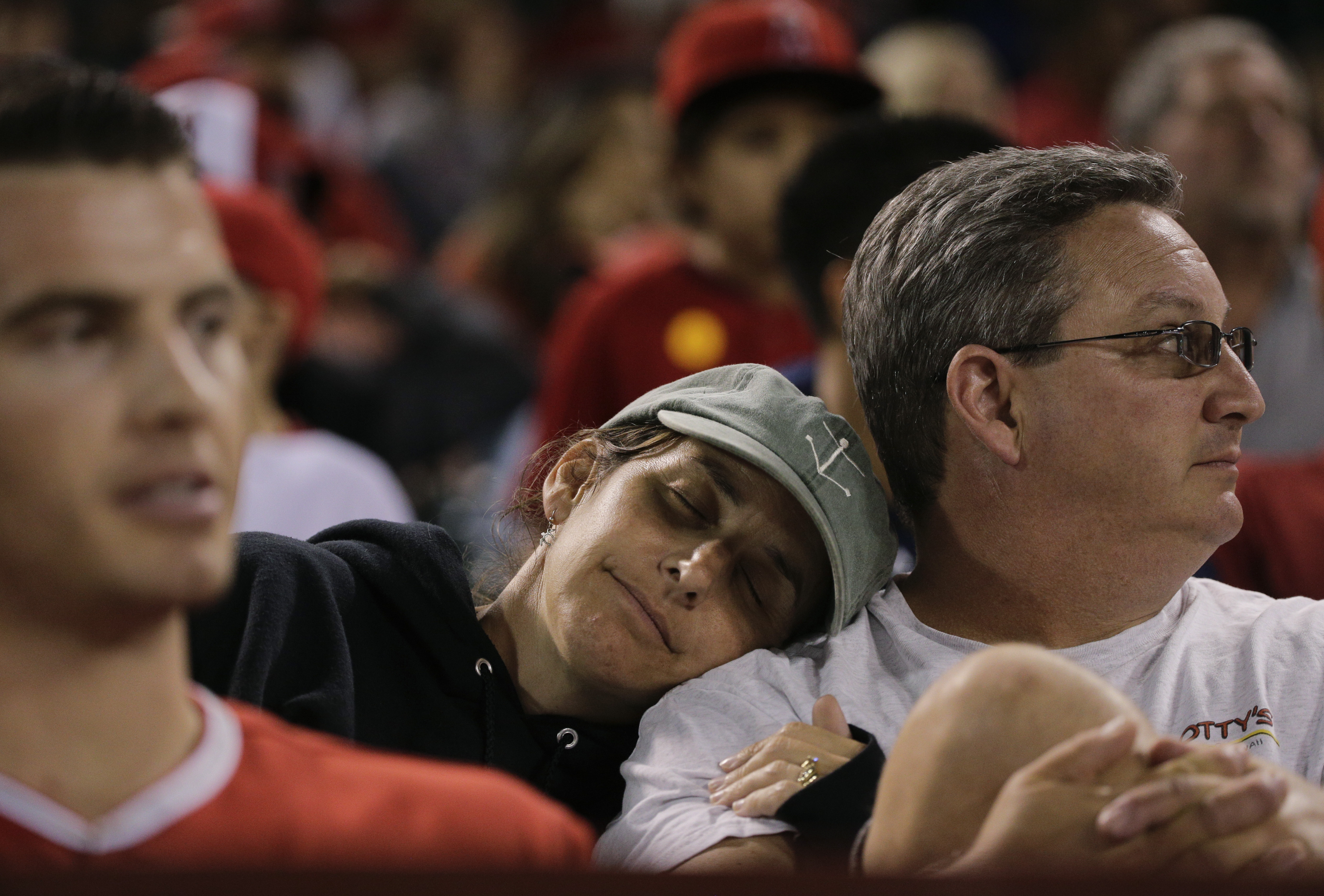
Baseball’s beauty has always been that, unlike lesser sports, it has no clock.
But that beauty collided with the changing nature of how our attention is held in recent years — games went too long, batters stepped out after every pitch, and in a second-screen world of watching TV, baseball suffered.
That changed today — or it might, anyway — when baseball announced that it has a clock now — sort of.
There will now be clock on the outfield scoreboard of and another behind home plate. “Immediately following the third out of each half-inning, the timer will count down from 2:25 for locally televised games and from 2:45 for nationally televised games. An MLB representative attending each game will operate the timers from the ballpark and will track the following event:
| Time Remaining | Activity |
| 40 Seconds | PA announces batter and begins to play walk-up music |
| 30 Seconds | Pitcher throws final warm-up pitch |
| 25 Seconds | Batter’s walk-up music ends |
| 20 Seconds-5 Seconds | Batter enters the batter’s box |
| 20 Seconds-0 Seconds | Pitcher begins motion to deliver pitch |
Pitchers will be permitted to throw as many warm-up pitches as they wish prior to the point when 30 seconds remain on the clock; however, pitchers will be deemed to have forfeited any of their traditional eight warm-up pitches that they are unable to complete prior to the 30-second deadline. Exceptions to these rules will be made in a variety of circumstances, including if the pitcher or catcher ended the prior half-inning at bat or on base.
Batters will be encouraged to get into the batter’s box with 20 seconds remaining on the timer. This is the same time that the broadcasters return from commercial. The pitcher is expected to begin his motion to deliver the pitch as soon as the batter gets into the batter’s box and becomes alert to the pitcher. Batters who do not enter the box prior to five seconds remaining on the timer and pitchers who do not begin the motion to deliver the pitch prior to zero seconds remaining on the timer will be deemed to have violated the break timing rules.
These rules will be enforced through a warning and fine system, with discipline resulting for flagrant violators. No fines will be issued in Spring Training or in April of the 2015 regular season. Donations will be made to the Major League Baseball Players Trust charitable foundation based on the level of adherence to the new rules.
Baltimore Sun beat writer Peter Schmuck is unimpressed:
Maybe I travel in the wrong circles, but I’ve never heard anyone who paid 60 bucks for a box seat turn to the guy or gal next to him in the first inning and say, “Gee, I sure hope they get this thing over with quick.” I have, however, heard grumbling about the slow pace of games in the press box over the past couple of decades, which is one of the reasons why this issue has gotten a lot of ink.
Now, I’m not saying that there wasn’t a time when the players needed a little kick in the pants to get back in the batters box. When those nine-inning games between the Orioles and Yankees started stretching past four hours, MLB was right to encourage the umpires to keep things moving and they succeeded in reversing the trend.
For no particular reason: Don’t fall asleep at a baseball game (NewsCut)
